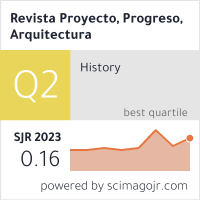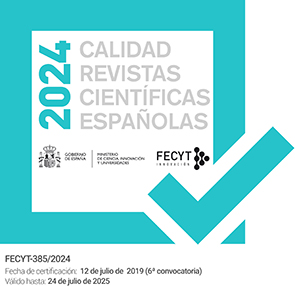HABITAR JUNTOS. SOBRE EL PAPEL DE LA ARQUITECTURA EN LA PRODUCCIÓN DE ESPACIOS COLECTIVOS HABITABLES / Living together. On the role of architecture in the production of habitable collective spaces
DOI:
https://doi.org/10.12795/ppa.2011.i5.06Palabras clave:
habitabilidad, vivienda colectiva, comunidad, derecho a la ciudad., habitability, collective housing, community, right to the city.Resumen
RESUMEN El artículo reflexiona sobre la necesidad de otra aproximación al concepto de habitabilidad que permita aplicar soluciones y propuestas colectivas a todas las escalas, transversal y simultáneamente, de la habitación a la ciudad, reivindicando el valor de lo colectivo como alternativa a la atomización e individualismo imperantes. Frente a aquellas prácticas que o bien se entretienen en la incesante producción de nuevas formas, o bien se alinean con el sistema neoliberal en la tarea de producir y absorber plusvalías a costa de la destrucción creativa del espacio urbano y el territorio, se reclama la urgencia y necesidad de otros modos de hacer que aborden decidida y comprometidamente la tarea de proyectar la convivencia. Es imprescindible avanzar más allá de lo formal y lo tipológico, incorporando no sólo los ya conocidos discursos de adaptación, disociación y otros rituales contemporáneos de lo privado, sino también el proyecto crítico de los espacios comunes, colectivos, públicos e intermedios que fomenten la sociabilidad y convivialidad, y hagan posible el compartir espacios, recursos y vivencias.
SUMMARY This paper reflects on the need for another approach to the concept of habitability; for collective solutions and proposals at all scales, transversally and simultaneously, from the room to the city, restoring the value of the collective as an alternative to prevailing fragmentation and individualism. Faced with those practices that are either entertained in the incessant production of new forms, or are aligned with the neoliberal system in the task of producing and absorbing surplus, at the expense of creative destruction of the urban space and the territory, there is an urgent need for other ways to firmly and uncompromisingly approach the task of planning coexistence. It is imperative to move beyond the formal and typological, incorporating not only the well-known rhetoric of adaptation, dissociation and other contemporary rituals of the private, but also the critical planning of those common, collective, public and intermediate spaces that promote sociability and co-existence, and make it possible to share spaces, resources and experiences.
Descargas
Citas
Arendt, Hanna: The human condition. 2nd ed ed. Chicago: University of Chicago Press:, 2nd edición, 1998.
Aaplund, Erik Gunnard et al.: Acceptera. Stockholm: Bokförlagsaktiebolaget Tiden, 1931.
Baird, George: The space of appearance. Cambridge, Mass.: MIT Press, 1995.
Bauman, Zygmunt: Liquid love: on the frailty of human bonds: Cambridge, UK Malden, MA: Polity Press Distributed in the USA by Blackwell Pub, 2003.
Benjamin, Walter et al.: The work of art in the age of its technological reproducibility: and other writings on media. Cambridge, Mass; London: Belknap Press of Harvard University Press, 2008.
Bourdieu, Pierre: Acts of resistance: against the tyranny of the market. New York: New Press: Distributed by Norton, 1998.
Casals Tres, Marina et al.: “Habitability, the scale of sustainability”. CISBAT 2009. Renewables in changing climate. Lausanne: EPFL, 2009.
Casals Tres, Marina; Arcas Abella, Joaquim: “Habitabilidad, un concepto en crisis. Sobre su redefinición orientada hacia la rehabilitación”. Congreso Internacional Sustainable Building, Construcción, revitalización y rehabilitación sostenible de barrios: una escala urgente e imprescindible, Madrid, 2010.
Clarke, David B.: The cinematic city. London; New York: Routledge, 1997.
Dol, Kees; Haffner, Mariette: Housing statistics in the European Union 2010. Delft: OTB Research Institute for the Built Environment, Delft University of Technology, 2010.
Easterling, Keller: Enduring innocence: global architecture and its political masquerades. Cambridge, Mass.: MIT Press, 2005.
Eleb, Monique. “Formas de Vida Emergentes y Habitat”. En Arnau, Joaquín et al.: Nuevos Modos de Habitar. Valencia: Colegio Oficial de Arquitectos de Valencia, 1995.
Harvey, David: Social justice and the city. Athens: Rev. ed. University of Georgia Press, 2009.
Hornsby, Adrian: “Implossions into an Inner Void: Global Architecture Without a Place or People to Call its Own”. En The Berlage Institute Report on Architecture, Urbanism and Landscape. 2009, Vol. 13. Hunch. pp. 26–37.
Jameson, Fredric: The political unconscious: narrative as a socially symbolic act. London: Routledge, 2002.
Latour, Bruno: “Why Has Critique Run out of Steam? From Matters of Fact to Matters of Concern”. En Critical Inquiry. 2004, Vol. 30, Nº 2. Chicago: University of Chicago Press. 1973. pp. 225–248.
Latour, Bruno: Making things public: atmospheres of democracy. Cambridge, Mass: MIT Press ZKM/Center for Art and Media in Karlsruhe [Karlsruhe, Germany], 2005.
Lefebvre, Henri: La presencia y la ausencia: contribución a la teoría de las representaciones. México: Fondo de Cultura Económica, 2006.
Martin, Reinhold: “Critical of what? Toward a utopian realism”. En Harvard Design Magazine. 2005, Vol. 22. Cambridge, MA: Harvard University Graduate School of Design. 1997. pp. 104–109.
Monteys, Xavier et al.: REHABITAR en nueve episodios (1). Madrid: Ministerio de Vivienda, Gobierno de España, 2010.
Pallasmaa, Juhani: The Embodied Image: Imagination and Imagery in Architecture. Chichester, U.K: Wiley, 2011.
Rancière, Jacques: The politics of aesthetics: the distribution of the sensible. London; New York: Pbk. ed. Continuum, 2006.
Rancière, Jacques: The future of the image. London; New York: English ed. Verso, 2007.
Rancière, Jacques: The emancipated spectator. London: Verso, 2009.
Sabater, Txatxo: “Inmuebles de distribución disociada y hábitat estratégico”. En Arnau, Joaquín et al.: Nuevos Modos de Habitar. Valencia: Colegio Oficial de Arquitectos de Valencia, 1995.
Till, Jeremy: Architecture depends. Cambridge, Mass: MIT Press, 2009.
Van Toorn, Roemer: “Fresh Conservatism, Landscapes of Normality”. En Quaderns [en línea]. 1998, Nº 215. Barcelona: Col-legi d'Arquitectes de Catalunya. 1985. Disponible en: http://www.roemervantoorn.nl/Resources/Fresh%20Conservatism.pdf
Vestbro, Dick Urban: “From Central kitchen to community co–operation–Development of Collective Housing in Sweden”. En Open House International. 1992, Vol. 17, Nº 2. pp. 30–38.
Zizek, Slavoj: Mapping ideology. London; New York: Verso, 1994.
Zizek, Slavoj: The plague of fantasies. London: Verso, 1997.
Zizek, Slavoj: The parallax view. Cambridge, Mass.: MIT Press, 2006.
Descargas
Publicado
Cómo citar
Número
Sección
Licencia
Las ediciones impresa y electrónica de esta Revista son editadas por el Secretariado de Publicaciones de la Universidad de Sevilla, siendo necesario citar la procedencia en cualquier reproducción parcial o total.
Salvo indicación contraria, todos los contenidos de la edición electrónica se distribuyen bajo una licencia de uso y distribución “Creative Commons Atribución-NoComercial-SinDerivar 4.0 Internacional” ![]() . Puede consultar desde aquí la versión informativa y el texto legal de la licencia. Esta circunstancia ha de hacerse constar expresamente de esta forma cuando sea necesario.
. Puede consultar desde aquí la versión informativa y el texto legal de la licencia. Esta circunstancia ha de hacerse constar expresamente de esta forma cuando sea necesario.
Los autores/as que publiquen en esta revista aceptan las siguientes condiciones:
- Los autores/as conservan los derechos de autor y ceden a la revista el derecho de la primera publicación, con el trabajo registrado con la licencia de atribución de Creative Commons, que permite a terceros utilizar lo publicado siempre que mencionen la autoría del trabajo y a la primera publicación en esta revista.
- Los autores/as pueden realizar otros acuerdos contractuales independientes y adicionales para la distribución no exclusiva de la versión del artículo publicado en esta revista (p. ej., incluirlo en un repositorio institucional o publicarlo en un libro) siempre que indiquen claramente que el trabajo se publicó por primera vez en esta revista.
- Se permite y recomienda a los autores/as a publicar su trabajo en Internet (por ejemplo en páginas institucionales o personales) antes y durante el proceso de revisión y publicación, ya que puede conducir a intercambios productivos y a una mayor y más rápida difusión del trabajo publicado (vea The Effect of Open Access).









